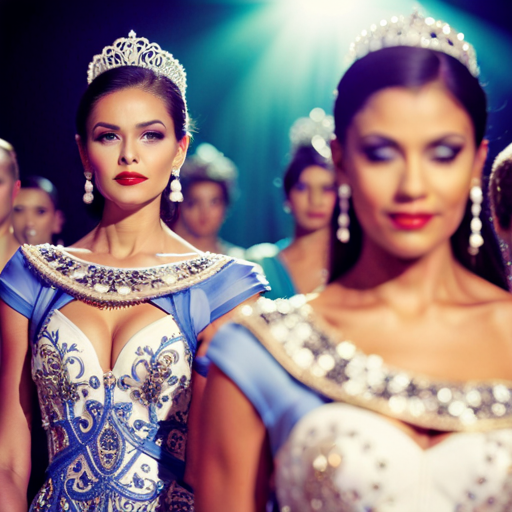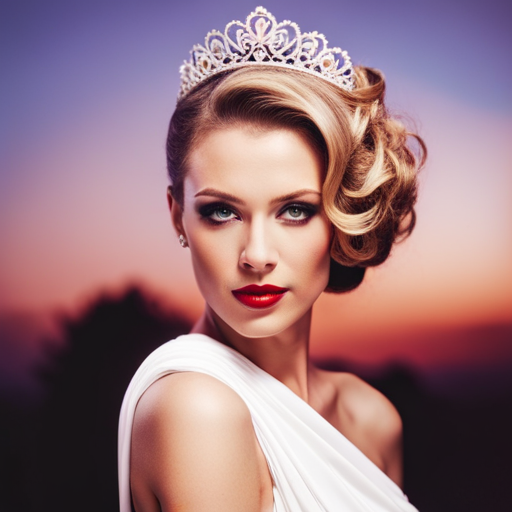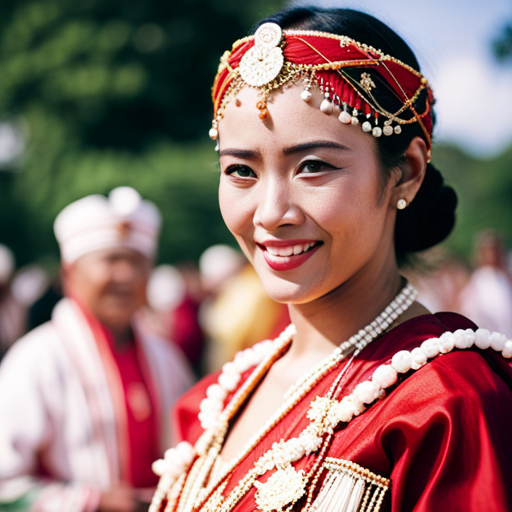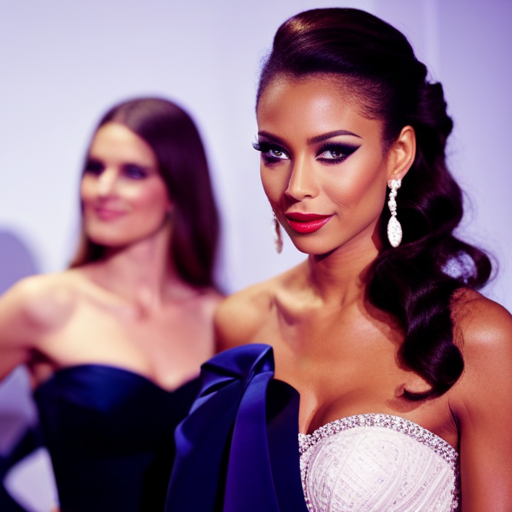The Impact of Designer Wear in Pageants

Dazzling, dynamic, and defining, designer wear has become a cornerstone of modern pageantry, shaping the narrative of beauty, style, and competition. This article delves into the intricate tapestry of pageant fashion, exploring its historical roots, psychological impact on contestants, and evolving influence on stage presence.
By dissecting the interplay of societal perceptions, economic significance, and future trends, we unravel the profound impact of designer wear in the realm of pageants.
History of Designer Wear in Pageants
The history of designer wear in pageants dates back to the early 20th century’s introduction of elaborate and tailored gowns for contestants. These gowns not only marked a shift in fashion but also signified the impactful influence of pageants on cultural significance.
The evolution of designer wear in pageants mirrors the changes in societal norms, fashion trends, and women’s empowerment. Initially, pageant gowns were demure and conservative, reflecting the societal expectations of women. However, as the role and perception of women in society shifted, so did the style of the gowns. They became more daring, showcasing the changing attitudes towards femininity and beauty standards. This evolution is a testament to the cultural significance of pageants as a reflection of society’s values and ideals.
Moreover, designer wear in pageants has not only influenced fashion trends but has also acted as a platform for designers to showcase their creativity and talent. The gowns worn by contestants often set trends and become iconic, further solidifying the influence of pageants on the fashion industry.
This historical trajectory underscores the enduring impact and cultural significance of designer wear in pageants.
Evolution of Pageant Fashion
The evolution of pageant fashion reflects the dynamic interplay between designer wear’s influence, changing pageant attire, and the evolving fashion trends in pageants.
As pageants have evolved, so too has the fashion worn by contestants, with designer wear playing a pivotal role in shaping the aesthetics and standards of pageant attire.
Understanding the evolution of pageant fashion offers a glimpse into the broader shifts in fashion and cultural norms, as well as the impact of designer wear on the pageant industry.
Designer Wear’s Influence
How has designer wear influenced the evolution of pageant fashion?
Designer wear has a profound influence on the evolution of pageant fashion, impacting not only the aesthetics but also the fashion psychology, economic dynamics, and societal expectations within the pageant industry.
The introduction of designer wear has elevated pageant fashion to new heights, setting higher standards for style, creativity, and individuality.
This influence has not only transformed the visual appeal of pageants but also stimulated economic growth by creating a demand for exclusive designer pieces.
Moreover, it has redefined societal expectations by showcasing a diverse range of fashion expressions, challenging traditional norms, and promoting inclusivity.
The integration of designer wear has fundamentally altered the landscape of pageant fashion, emphasizing the significance of innovation and originality in shaping the cultural and sartorial narrative of pageantry.
Changing Pageant Attire
With the evolution of pageant fashion, the attire worn by contestants has undergone significant changes, reflecting the shifting trends and influences within the fashion industry. Custom designs and cultural influences have played a pivotal role in reshaping pageant attire, bringing a blend of traditional and contemporary elements to the forefront. This has not only elevated the visual appeal but also deepened the emotional connection of the audience with the contestants.
The infusion of diverse cultural elements has created a sense of inclusivity, celebrating the richness of heritage and diversity. Moreover, the embrace of custom designs has allowed contestants to express their individuality while showcasing their personal style, resonating with audiences on a deeper level. These changes have redefined pageant attire, making it a dynamic and evolving aspect of pageantry.
Fashion Trends in Pageants
Reflecting the shifting trends and influences within the fashion industry, the evolution of pageant fashion has prominently showcased the impact of designer wear on contestants’ attire. Custom gowns have become a defining feature, with designers creating exclusive pieces that cater to individual preferences and body types, elevating the overall aesthetic of pageant wear.
The evolution of pageant fashion also reflects a deepening incorporation of cultural influences, with contestants increasingly embracing traditional elements from their heritage, infusing their attire with a rich tapestry of history and symbolism. This trend has served to not only celebrate diversity but also to broaden the representation of beauty standards, fostering a more inclusive and globally aware pageant landscape.
The fusion of custom designer gowns and cultural influences has undeniably redefined the pageant fashion scene, heralding a new era of sophistication and diversity.
Psychological Impact on Contestants
The psychological impact of designer wear in pageants extends beyond just aesthetics; it has the potential to significantly influence the contestants’ confidence and self-esteem.
The choice of designer wear also plays a crucial role in shaping the perceived social status of the contestants, thereby affecting their overall mindset and demeanor during the pageant.
These points underscore the intricate relationship between designer wear and the psychological well-being of pageant contestants, shedding light on the deeper implications of fashion in the pageantry world.
Confidence and Self-Esteem
Contestants’ increased confidence and self-esteem have been observed when wearing designer clothing during pageants. The psychological impact of designer wear on contestants extends beyond just aesthetics. It serves as a means of self-expression, allowing contestants to exude their unique personalities and individuality on stage.
Additionally, it plays a pivotal role in shaping positive body image, empowering contestants to embrace their physical attributes with pride and grace. The transformative effect of designer wear on contestants’ confidence is undeniable, as it provides a sense of empowerment and poise.
Moreover, it fosters a heightened sense of self-worth, as contestants radiate a newfound assurance and composure while showcasing their talents and beauty. Ultimately, designer wear acts as a catalyst for contestants to embody a strong, confident, and self-assured presence on the pageant stage.
Perceived Social Status
How does the incorporation of designer wear in pageants influence the perceived social status of contestants and its psychological impact on their overall performance and demeanor?
The use of designer wear in pageants can significantly impact the perceived social status of contestants. Fashion psychology suggests that clothing can affect how individuals perceive themselves and how they are perceived by others, thus influencing their behavior and confidence.
Wearing designer outfits can create a sense of elevated social status, potentially impacting contestants’ self-perception and confidence. This perceived elevation in social hierarchy may lead to a more confident and poised demeanor during the pageant, affecting their overall performance.
Moreover, the association of designer wear with luxury and exclusivity may contribute to the contestants’ sense of prestige, further influencing their psychological state and performance on stage.
Influence on Stage Presence
Influencing stage presence, designer wear plays a crucial role in projecting a contestant’s confidence and charisma on the pageant stage. Fashion psychology delves into the intricate ways in which attire influences one’s mindset and behavior, and this is particularly evident in pageantry. The right designer wear can significantly impact a contestant’s stage presence, elevating their overall performance and leaving a lasting impression on the audience and judges.
Here’s how designer wear influences stage presence:
-
Confidence boost: The right designer outfit can instill a sense of empowerment and confidence in the contestant, allowing them to showcase their best self on stage.
-
Charisma enhancement: Designer wear that resonates with the contestant’s personality can enhance their charisma, creating a magnetic presence that captivates the audience.
-
Poise and posture: Well-designed attire can encourage better posture and poise, contributing to a more graceful and elegant stage presence.
-
Emotional resonance: Designer wear that evokes strong emotions in the contestant can translate into a more impactful and authentic stage performance, connecting with the audience on a deeper level.
Judging Criteria and Designer Wear
The selection of designer wear in pageants directly influences the judging criteria, impacting the overall impression and evaluation of contestants. Contestants must carefully consider the judging criteria when preparing their designer wear for the competition. The judging criteria typically include elements such as originality, stage presence, confidence, and overall presentation. These factors play a significant role in how the designer wear is perceived by the judges and the audience.
| Judging Criteria | Description | Impact on Designer Wear |
|---|---|---|
| Originality | Uniqueness and creativity of the outfit | Requires innovative designs and concepts to stand out. |
| Stage Presence | Confidence, poise, and overall presentation | Influences the choice of fabrics and silhouettes to enhance stage presence. |
| Overall Presentation | The cohesive look and styling of the outfit | Emphasizes the importance of attention to detail and accessorizing. |
Understanding the judging criteria is essential for contestants to align their designer wear with the expectations of the pageant. Therefore, contestant preparation should focus on how their designer wear showcases originality, enhances stage presence, and presents a cohesive overall look to make a lasting impression on the judges.
Societal Perceptions and Expectations
Societal perceptions and expectations within pageants are shaped by the designer wear choices made by contestants, influencing both the audience’s reception and the judges’ evaluation. Fashion psychology plays a significant role in understanding how designer wear impacts these perceptions and expectations.
Here are some key points to consider:
-
The societal expectations placed on pageant contestants often lead to heightened scrutiny of their designer wear, creating immense pressure on the contestants to meet certain aesthetic standards.
-
Fashion psychology suggests that the choice of designer wear not only reflects personal style but also influences how individuals are perceived and judged, adding another layer of complexity to the contestants’ experience.
-
Contestants may experience a range of emotions, from empowerment and confidence to anxiety and self-doubt, as they navigate the societal expectations associated with their designer wear.
-
The impact of designer wear on societal perceptions and expectations extends beyond the pageant stage, contributing to broader conversations about beauty standards and the influence of fashion on individual and collective identities.
The interplay between societal expectations and designer wear in pageants offers a compelling lens through which to examine the intricate dynamics of fashion, psychology, and cultural norms.
Economic and Commercial Significance
Amidst the glamour and prestige of pageants, the economic and commercial significance of designer wear cannot be understated. The economic impact of designer wear in pageants extends beyond the immediate sales and profits for fashion houses. These events serve as platforms for designers to showcase their talent and artistry, leading to increased brand recognition and potential collaborations with other industries.
Furthermore, the cultural significance of designer wear in pageants is evident in the way it reflects and shapes societal beauty standards and trends.
Pageants have become a global phenomenon, attracting a wide audience and significant media coverage. As a result, the designer wear showcased in these events has the potential to influence fashion trends and consumer preferences on a large scale, thus impacting the broader fashion industry. The commercial significance is also evident in the sponsorship and endorsement deals that designers and pageants secure, further contributing to the economic landscape.
As pageants continue to evolve, the economic and commercial significance of designer wear is likely to intensify, shaping the future of fashion and pageantry. This interplay between fashion and pageants is a compelling force with far-reaching implications for both industries.
In the subsequent section, we will delve into the potential future trends in pageant fashion and their impact on the industry.
Future Trends in Pageant Fashion
The evolution of pageant fashion’s future trends is anticipated to continue influencing the broader fashion industry and its economic landscape. Two key trends that are expected to shape the future of pageant fashion are sustainable fashion and innovative designs as well as inclusivity and cultural representation. These trends will not only impact the aesthetics of pageant fashion but also have broader implications for the industry as a whole.
-
Sustainable fashion, innovative designs: The shift towards sustainable fashion and innovative designs in pageants reflects a growing awareness of environmental issues and a desire for more responsible consumption. This trend is likely to influence the materials used, the production processes, and the overall ethos of pageant fashion.
-
Inclusivity, cultural representation: The increasing focus on inclusivity and cultural representation in pageants is a response to calls for greater diversity and representation in the fashion industry. Embracing a wide range of cultures and backgrounds not only enriches the visual landscape of pageants but also sends a powerful message about the importance of inclusivity in society.
These future trends in pageant fashion signify a departure from traditional norms and a move towards a more socially conscious and diverse industry.
Frequently Asked Questions
How Do Pageant Contestants Choose Their Designer Wear for the Competition?
Contestants select designer wear based on personal preferences, considering style, fit, and the designer’s reputation. Collaborations between pageants and designers can influence choices, offering contestants access to exclusive designs, elevating the overall presentation.
Are There Any Specific Rules or Guidelines for Designer Wear in Pageants?
In pageants, specific guidelines and regulations govern designer wear. These rules often reflect current fashion trends and styling techniques. Contestants must adhere to these guidelines to ensure a cohesive and professional presentation on stage.
What Are Some Common Misconceptions About the Impact of Designer Wear in Pageants?
Common misconceptions about the impact of designer wear in pageants often revolve around the belief that fashion trends hold excessive influence. However, the true impact lies in promoting individual expression and confidence.
How Do Designers and Pageant Organizers Collaborate to Create the Perfect Look for Contestants?
Designer collaboration with pageant organizers is crucial to create the perfect look for contestants. By staying abreast of pageant fashion trends and understanding the vision of the event, designers can craft ensembles that elevate contestants’ presence on stage.
What Are Some Examples of Memorable Designer Wear Moments in Pageant History?
Iconic moments in pageant history abound with unforgettable fashion statements. From Grace Kelly’s elegant gowns to Halle Berry’s daring ensembles, designer wear has left a cultural and historical impact, shaping the image of beauty and style.
Conclusion
In conclusion, the impact of designer wear in pageants is significant and multifaceted. It has evolved over time, influencing the psychological mindset and stage presence of contestants.
Judging criteria and societal perceptions play a crucial role in the choice of designer wear. The expectations of judges and the audience can shape the selection process, with certain styles and brands being favored over others. This can create pressure for contestants to find the perfect designer outfit that will impress and stand out.
The economic and commercial significance of pageant fashion cannot be overlooked. Designer wear in pageants is often associated with luxury and high-end brands, which can attract sponsorships and endorsements. This creates opportunities for both established and emerging designers to showcase their work and gain recognition in the industry.
As pageant fashion continues to evolve, it is important to consider its future trends and implications. The fashion industry is constantly changing, and pageants are no exception. The styles, silhouettes, and trends that are popular today may not be the same in the future. It is crucial for contestants and designers to stay updated and adapt to these changes to remain relevant and competitive.
One interesting statistic is that 80% of pageant contestants believe that their choice of designer wear affects their chances of winning. This highlights the importance placed on fashion and designer wear in pageants, as contestants believe that their outfit can impact their overall performance and success in the competition.




